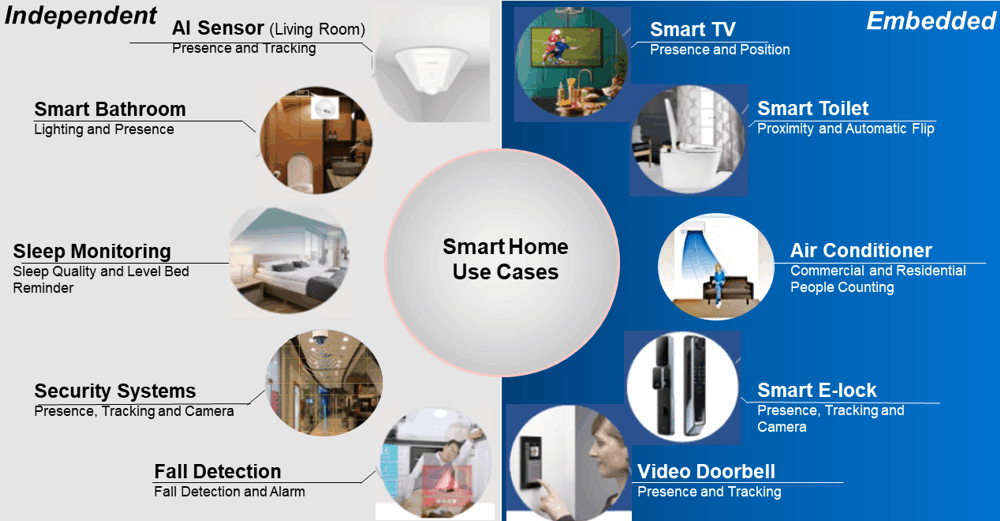SWRA807 March 2024 IWRL6432 , IWRL6432AOP
3.1 Product Type
Millimeter wave radar is mainly used for people detection in smart homes. The specific functions include human presence detection, location tracking, sleep monitoring, and gesture recognition. According to the different product forms, millimeter wave radar can be divided into embedded type and independent type. Embedded type means the radar is embedded into a product for use and powered by the internal power of the product. Independent type means a separate radar module that does not need to be embedded in any product and is usually battery powered. Typical applications of millimeter wave radar in smart homes are shown in Figure 3-1.
 Figure 3-1 mmWave typical application in smart
homes
Figure 3-1 mmWave typical application in smart
homesEmbedded
Embedded millimeter wave radar sensors are also replacing infrared sensors in smart homes, such as smart speakers, smart air conditioners, smart lighting, automatic doors, smart toilets, E-locks, video doorbells, and central control screens. In these applications, mmWave radar can be embedded into these products, making power supply and installation more convenient.
Independent
Independent household millimeter wave radar is mainly used for detection and identification of people. 60GHz radar can be used for detecting the presence, location and direction of people, and tracking. Independent radar can also coexist with lighting equipment, environmental equipment, and home appliances. In the existing technology, independent is commonly used for motion sensing in video surveillance or infrared sensors. Video surveillance is intrusive, while infrared human body sensing can only be used to determine the presence or absence of a person, and is therefore difficult to use to obtain the precise location of people. Millimeter wave radar can effectively make up for the shortcomings of both technologies.